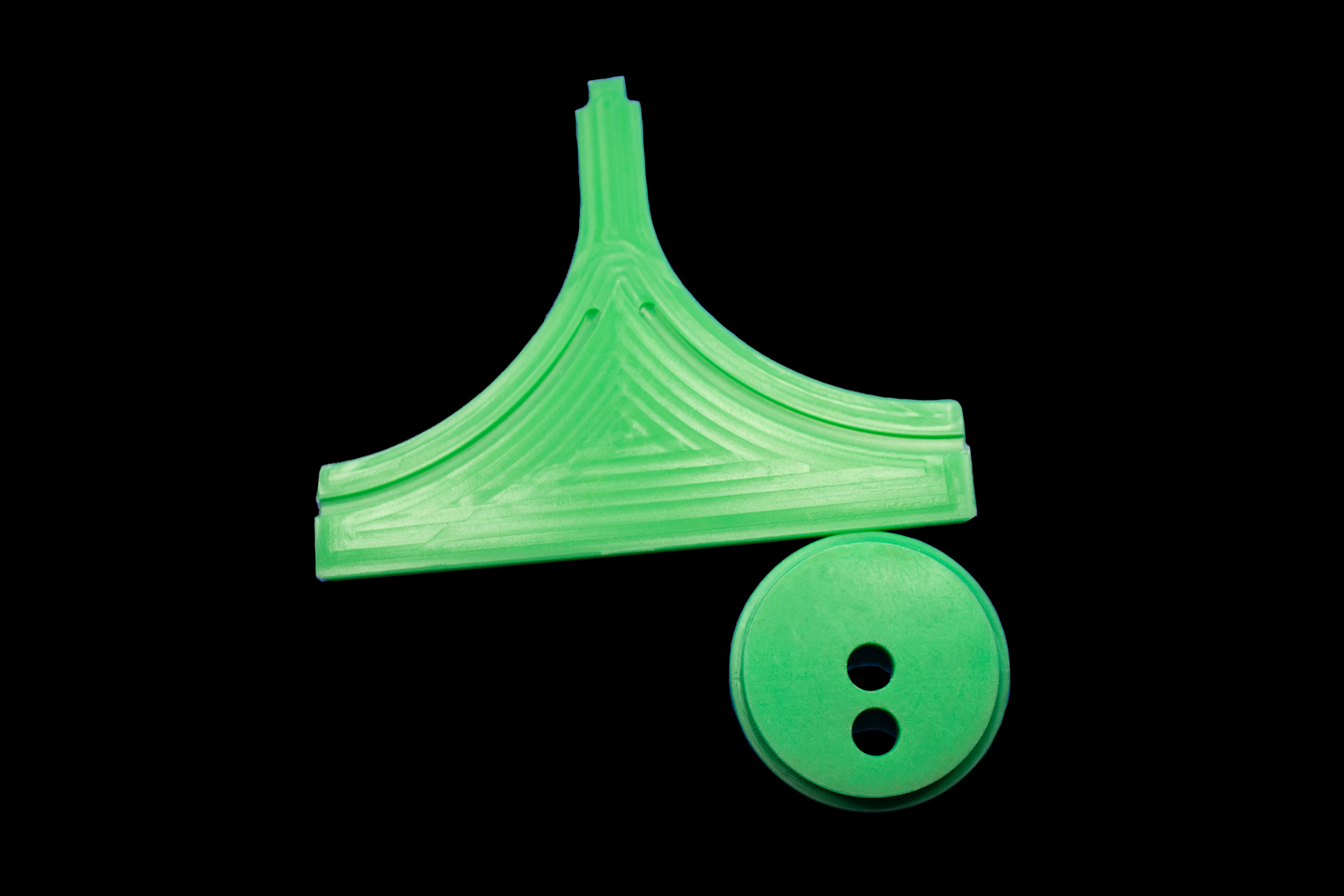
Polymat UHMWPE
Ultra High Molecular Weight Polyethylene (UHMWPE) is a high-performance thermoplastic renowned for its exceptional wear resistance, impact strength, and low friction properties. UHMWPE is widely utilized in various demanding applications across industries such as healthcare, aerospace, automotive, and industrial sectors due to its unique combination of attributes.
Mechanical Properties
- Tensile strength : UHMWPE typically has a tensile strength in the range of 30 to 50 MPa (megapascals), though it can vary depending on the specific grade and processing conditions..
- IImpact Strength: UHMWPE has exceptional impact resistance, making it highly durable under high-impact conditions. Its impact strength is significantly higher compared to many other polymers.
- Wear Resistance: UHMWPE has excellent wear resistance, which contributes to its longevity and reliability in applications where high abrasion is a concern.
- Modulus of Elasticity: The modulus of elasticity (or Young's modulus) for UHMWPE is relatively low compared to some other materials, typically around 0.8 to 1.5 GPa (gigapascals). This means it is more flexible and less rigid.
Thermal Properties
- Melting Point: It has a melting point in the range of 130°C to 136°C (266°F to 277°F). This relatively high melting point is due to its long molecular chains, which contribute to its strength and rigidity.
- Thermal Stability: With a melting point around 130°C to 136°C (266°F to 277°F), UHMWPE maintains its performance under moderate temperatures. It is also effective at low temperatures, retaining its toughness and impact resistance.
- Low Moisture Absorption: The material has minimal moisture absorption, which helps it maintain its mechanical properties and dimensional stability in humid or wet conditions.
Chemical Properties
- Resistance to Acids: UHMWPE shows excellent resistance to most acids, including sulfuric acid, hydrochloric acid, and nitric acid. It does not degrade or lose its mechanical properties when exposed to these acids, making it suitable for use in harsh chemical environments.
- Resistance to Bases: It is also resistant to many bases, including sodium hydroxide (caustic soda) and potassium hydroxide. It does not swell or degrade when exposed to these substances.
- Resistance to Solvents: It has good resistance to many organic solvents, such as alcohols, hydrocarbons, and esters. However, it may swell or degrade in some organic solvents, especially at high temperatures or concentrations.
- Hydrolysis Resistance: It exhibits excellent resistance to hydrolysis, meaning it maintains its properties even when exposed to moisture. This makes it suitable for use in environments with high humidity or where exposure to water is common.
- Oxidation Resistance: It has good resistance to oxidation, but prolonged exposure to high temperatures and oxygen can lead to oxidation and degradation of the polymer over time. In general, its performance remains stable under normal conditions.
- Chemical Stability: Its chemical stability is one of its key advantages. It does not react with or degrade when exposed to most chemicals, contributing to its long-term durability and reliability in various applications.
Industry Applications
Medical and Healthcare:
Used in orthopaedic hip and knee replacements for its biocompatibility and wear resistance. Applied in surgical tools for durability and resistance to sterilization. Utilized in prosthetic limbs and medical devices for its strength and flexibility.
Aerospace
Aircraft Components: Used in lightweight, high-strength parts such as wear strips, seals, and bearings to reduce weight and improve fuel efficiency.
Space Applications: Applied in spacecraft components and equipment due to its low density and resistance to extreme temperatures and radiation.
Defense and Security
Bulletproof Vests: Integral in personal protective equipment like body armor due to its high tensile strength and impact resistance.
Protective Shields: Used in protective barriers and shields where high strength and low weight are crucial.
Industrial and Manufacturing
Conveyor Systems: Employed in conveyor belts and rollers for its low friction and resistance to wear.
Pipes and Fittings: Used in piping systems for chemical and abrasive materials due to its chemical resistance and durability.
Material Handling: Applied in chutes, hoppers, and liners to reduce friction and wear in material handling equipment.
Automotive
Engine Parts: Utilized in components such as bushings, gaskets, and seals for its strength and low friction properties.
Interior Components: Used in automotive interiors for parts like seat bases and trim panels where durability and lightweight properties are beneficial.
Marine
Ship Components: Applied in marine environments for components like wear pads, bearings, and liners due to its resistance to corrosion and wear.
Dock Fenders: Used in dock fender systems to absorb impacts and protect docks and ships.
Sports and Recreation
Sports Equipment: Used in various sports equipment, including ski bases and skateboard wheels, for its impact resistance and low friction.
Protective Gear: Applied in sports gear and equipment where high impact resistance and durability are required.
Consumer Goods
Kitchenware: Employed in kitchen utensils and cutting boards for its durability and resistance to staining and Odors.
Toys: Used in the manufacture of toys for its safety, strength, and resistance to wear.